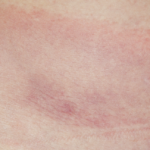Paradoxically, with regards to Lyme disease, some practitioners seem to ignore this rule.7 In their view, the lack of antibody positivity does not preclude the diagnosis of Lyme disease. Furthermore, many of them reject the criteria for diagnosing Lyme disease proposed by the Centers for Disease Control and Prevention or by the Infectious Diseases Society of America (IDSA). In its place, they have coined the term, “chronic Lyme disease” to explain a variety of vague symptoms such as chronic fatigue and cognitive dysfunction that plague many of their patients. One of the chronic Lyme advocacy websites lists 25 possible symptoms of Lyme disease, including testicular or pelvic pain, back pain, sleep disturbances, and mood swings.8
Although the vast majority of individuals given the diagnosis of chronic Lyme disease do not fulfill the IDSA criteria that are used to diagnose Lyme disease, many self-proclaimed “Lyme literate” physicians liberally prescribe nostrums, including prolonged antimicrobial therapies, in a belief that this approach can eradicate suspected infection and cure the patient of what ails them. Their patients and supporters have created vocal advocacy organizations and established some strong alliances with some politicians.
One relationship in particular stands out. In November 2006, the Connecticut Attorney General (and currently the senior U.S. Senator from Connecticut) Richard Blumenthal initiated an investigation to determine whether the IDSA violated antitrust laws in the promulgation of its 2006 Lyme disease guidelines. He leveled some serious accusations against the IDSA. “The IDSA’s 2006 Lyme disease guideline panel undercut its credibility by allowing individuals with financial interests—in drug companies, Lyme disease diagnostic tests, patents, and consulting arrangements with insurance companies—to exclude divergent medical evidence and opinion.”9 The IDSA maintained that it had developed the 2006 Lyme disease guidelines on the basis of a proper review of the medical or scientific studies and evidence by a panel of experts in the prevention, diagnosis, and treatment of Lyme disease.
A state attorney general wields a big stick. During his tenure, Blumenthal sued tobacco companies, polluters, Internet pornographers, and other violators of the public trust. Attacking the credibility and professionalism of a medical specialty society made little sense and, in my view, tarnished his image. Perhaps he had some misgivings about the lawsuit because, 18 months after filing it, Blumenthal accepted a proposal from the IDSA to convene an independent panel of medical experts to conduct a one-time review of their guidelines.10 The review panel members, vetted by an ombudsman for potential conflicts of interest, reviewed the entirety of the 2006 guidelines, with particular attention to the recommendations devoted to post–Lyme disease syndromes. After multiple meetings, a public hearing, and extensive review of research and other information, the panel concluded that the recommendations contained in the 2006 guidelines were medically and scientifically justified on the basis of all of the available evidence and that no changes to the guidelines were necessary. Case closed? Not really. Perusing some of the vitriolic commentary on the Internet about the IDSA guidelines will dispel you of that myth!



